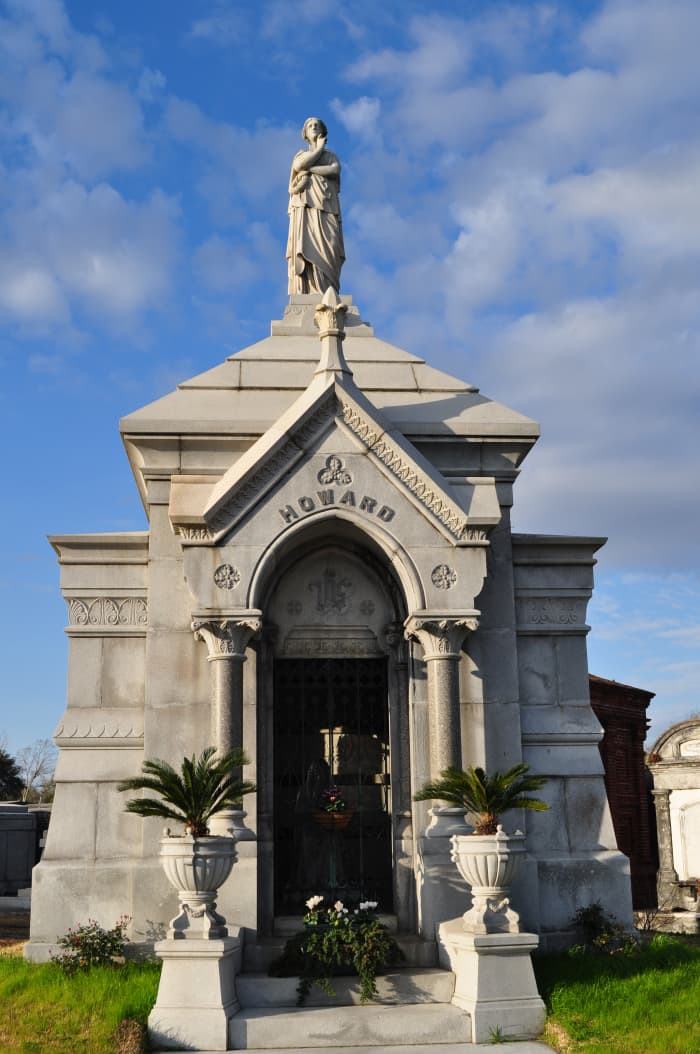

There is always a family there to care for a grave. “Holt is the most-visited cemetery in the city by families,” Ford said. Even though that graveyard is closed to the public, Ford said relatives of people buried there can arrange a visit by contacting her office.Īlso high in visitor interest, she said, is Holt Cemetery, a seven-acre graveyard abutting Delgado Community College’s City Park campus. 1, in the heart of the Garden District, has an organization of about 70 tomb owners. Which explains Ford’s desire to motivate people to take an interest in their relatives’ graves: “We want to connect the neighbors and the families to the resource because we need the families to maintain those cemeteries long after I’m gone.” The object is to create a long-term interest in stewardship.” “The purpose of interpretation is to connect visitors to the resource because you want the visitors to support the resource in the future. “Park rangers don’t do educational talks to entertain people,” she said. In addition to surveying the tombs after Hurricane Ida, Ford also found that the storm had knocked down two trees and felled some branches at various locations.Įmphasizing the importance of getting involved in cemeteries is a logical follow-up to Ford’s time with the National Park Service in Mesa Verde and Zion national parks, where, among other things, she learned that she and her colleagues were there to do more than rhapsodize about the view. With whatever money I could use for a big, sexy project, I could hire three guys to cut grass. “Cemeteries need slow and consistent stewardship,” Ford said. She and Kewanda Baxter, a cemetery services specialist, are the only two full-time employees in that office. If you have questions or need support, call me, and we’ll talk.”įord, who has a master’s degree in historic preservation, has held the directorship since December 2019. … I would rather make it easier to … show there’s a point to doing this. “I would rather share expertise and resources than show up and rap somebody on the wrist for not doing things in the exactly perfect way. “I am much more of a carrot person than a stick person,” Ford said. Even though Ford has the power to force clean-ups and even declare tombs abandoned, “it’s practically impossible for us to do anything like this,” she said. It also was part of her continuing effort to impress upon people the importance of tending to their relatives’ graves and to offer suggestions and support for getting such work done. “I’m showing people that I’m interested in being there,” Ford said. It was the same reason she attends as many funerals in those cemeteries as possible. It could be said that these visits were part of Ford’s job - she is the superintendent of those burial grounds - but for her, it was something more. She found 22 hurricane-damaged tombs and sent pictures of the plots to the owners with notes that their relatives’ resting places needed attention. Interested in getting more preservation stories like this delivered to your door nine times a year? Become a member of the PRC for a subscription!Īfter Hurricane Ida slammed New Orleans, Emily Ford scrutinized every tomb in all six city-owned cemeteries to photograph damaged structures.

Please note that this tour covers about one mile of the city, so comfortable walking shoes are recommended.This story appeared in the October issue of PRC’s Preservation in Print magazine.
NEW ORLEANS GRAVEYARD FREE
Here, slaves and free people met on Sunday to openly trade, socialize, play music, dance and practice voodoo rituals. Then walk through Louis Armstrong Park where you visit Congo Square, a historical site from the 1800s.

Take a short break at the old train station. As you stroll, enjoy tales of New Orleans’ voodoo history and peek into a small shop that specializes in voodoo ritual materials such as herbs, oils, and amulets. Hear more from your guide about a largely misunderstood religion that still enjoys a formidable presence in New Orleans. Catch a glimpse of a cloistered courtyard and hear of its utilitarian function. Discover the architectural diversity of the area as you pass French and Spanish‐inspired buildings, gorgeous Creole townhouses, ‘Entresol’ houses and shotgun homes. Choose a morning or afternoon start time and meet your friendly local guide for a narrated walk through the French Quarter.

Your journey through mystical New Orleans’ begins in the French Quarter.


 0 kommentar(er)
0 kommentar(er)
